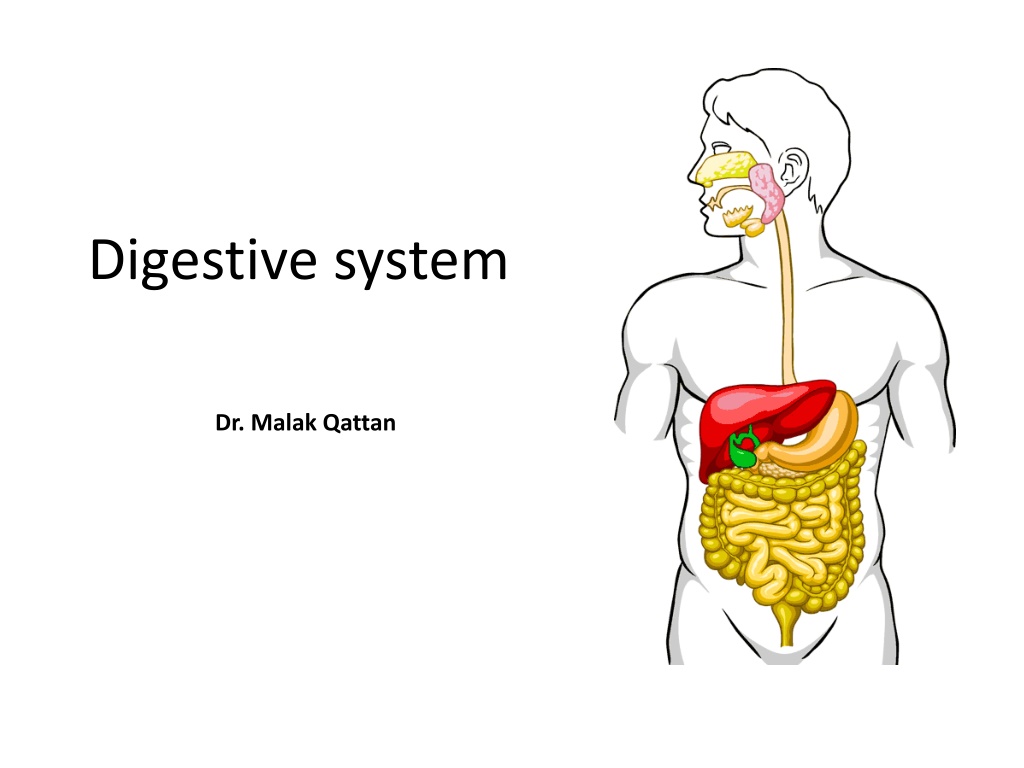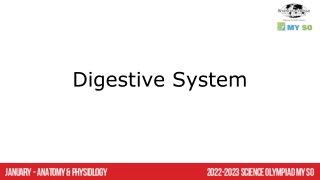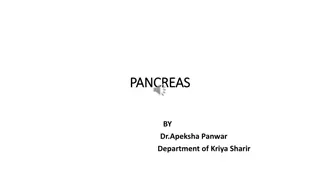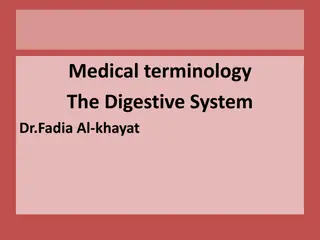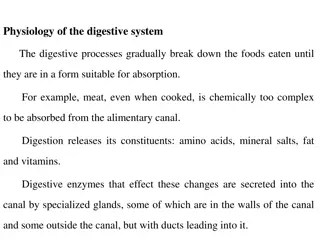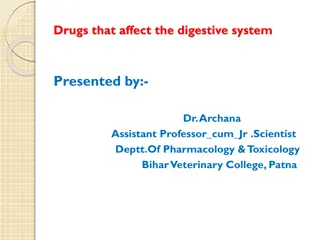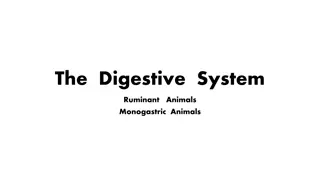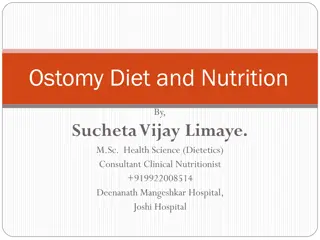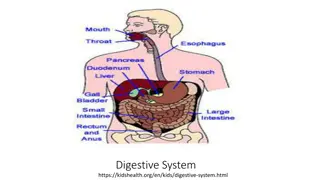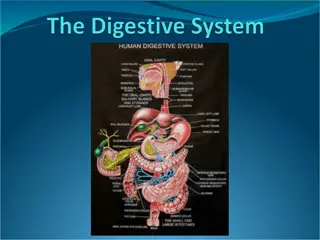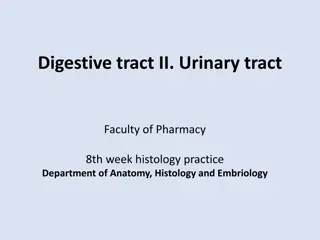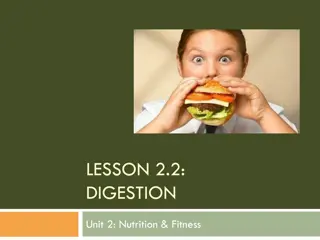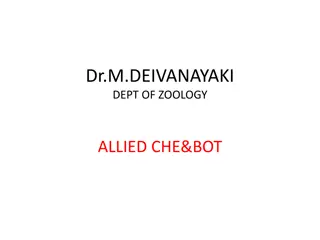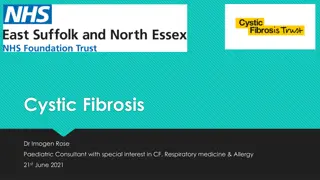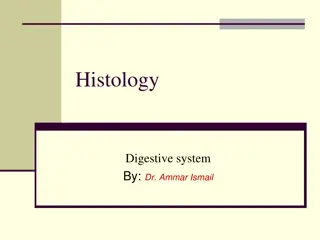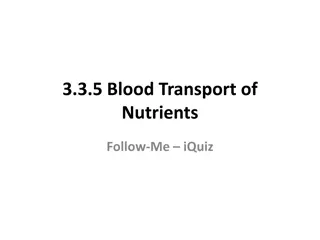Digestive system
The digestive system, comprising the GI tract and accessory organs, processes food for nutrient absorption through actions like secretion, absorption, excretion, ingestion, and digestion. Explore the functions of organs like the mouth, tongue, pharynx, esophagus, stomach, and more.
Download Presentation

Please find below an Image/Link to download the presentation.
The content on the website is provided AS IS for your information and personal use only. It may not be sold, licensed, or shared on other websites without obtaining consent from the author.If you encounter any issues during the download, it is possible that the publisher has removed the file from their server.
You are allowed to download the files provided on this website for personal or commercial use, subject to the condition that they are used lawfully. All files are the property of their respective owners.
The content on the website is provided AS IS for your information and personal use only. It may not be sold, licensed, or shared on other websites without obtaining consent from the author.
E N D
Presentation Transcript
Digestive system Dr. Malak Qattan
The GI tract(gastrointestinal tract) Mouth Pharynx Esophagus Stomach Small intestine Large intestine Anus The accessory digestive organs Supply secretions contributing to the breakdown of food Teeth & tongue Salivary glands Gallbladder Liver Pancreas 2
Digestive system function Acquires nutrients from environment Anabolism Uses raw materials to synthesize essential compounds Catabolism Decomposes substances to provide energy cells need to function
Actions of Digestive (GI) Tract Secretion Release of water acids, buffers, enzymes & salts by epithelium of GI tract and glands Absorption Movement of substrates, electrolytes, vitamins & water across digestive epithelium Excretion Removal of waste products from body fluids Ingestion Occurs when material enters via the mouth Mechanical Processing Crushing makes material easier to move through the tract Digestion Chemical breakdown of food into small organic compounds for absorption
The Mouth Mouth = oral cavity Lips Cheeks 5
Tongue Mostly muscles Grip food Help in swallowing Taste buds Tonsil back of tongue https://encrypted-tbn2.gstatic.com/images?q=tbn:ANd9GcTU52nOXa_W5MMcBiM9JwccDinPigInfnZeLRXP4Fqv032Fk6Yo 6
Pharynx Oropharynx and laryngopharynx Sequentially squeeze food into esophagus ___oropharynx ___laryngopharynx 7
Esophagus Continuation of pharynx in mid neck Muscular tube collapsed when lumen empty Descends through thorax Esophagus___________ 8
Stomach J-shaped; widest part of alimentary canal Temporary storage and mixing 4 hours Starts food breakdown Pepsin HCl (hydrochloric acid) helps kill bacteria Stomach tolerates high acid content but esophagus doesn t why it hurts so much when stomach contents refluxes into esophagus (heartburn) Most nutrients wait until get to small intestine to be absorbed; exceptions are: Water, electrolytes, some drugs like aspirin and alcohol (absorbed through stomach) Capacity: 1.5 L food; max capacity 4L (1 gallon) 9
Small intestine Longest part of alimentary canal (2.7-5 m) Most enzymatic digestion occurs here Most enzymes secreted by pancreas, not small intestine Almost all absorption of nutrients 3-6 hour process Small intestine___________ 10
Large intestine Main function: to absorb water and electrolytes Subdivisions Cecum Appendix Colon Rectum Anal canal 11
The Liver Largest gland in the body Over 500 functions R and L lobes 12
Gallbladder Bile is produced in the liver Bile is stored in the gallbladder Bile is excreted into the duodenum when needed (fatty meal) Bile helps dissolve fat and cholesterol If bile salts crystallize, gall stones are formed * 13
Pancreas Pancreatic function (hormones released into blood) Islets of Langerhans are the hormone secreting cells 1. Insulin Lowers blood glucose (sugar) 2. Glucagon Raises blood glucose (sugar) 14
Diseases of the Digestive System The most common problems experienced are: bloating, heartburn and acidity, colitis, constipation, diarrhea, nausea and vomiting, trouble digesting... 1. Tooth Decay (dental caries) Bacterial Diseases of the Upper Digestive Tract (Mouth) Most common infectious disease of humans Young are more susceptible than old
Diseases of the Digestive System 2. Gastritis Inflammation of the stomach associated with the production of gastric ulcers Caused by Helicobacter pylori Infection can persist for years or life Can develop either peptic or duodenal ulcers or both
Diseases of the Digestive System 3. Mumps Mumps is an acute viral infection of the parotid glands (Parotitis) Humans are the only source of the virus
Diseases of the Digestive System 4. Hepatitis inflammation of the liver (A, B, C, D, E, & G) Hepatitis A (HAV) formerly called infectious hepatitis Spreads via fecal-oral route Most infections are asymptomatic or show only mild symptoms 18
References 1. Maton, Anthea.(1993). Human Biology and Health. 2. Thompson WG, Longstreth GL, Drossman DA et al. (2000). Functional Bowel Disorders 19
